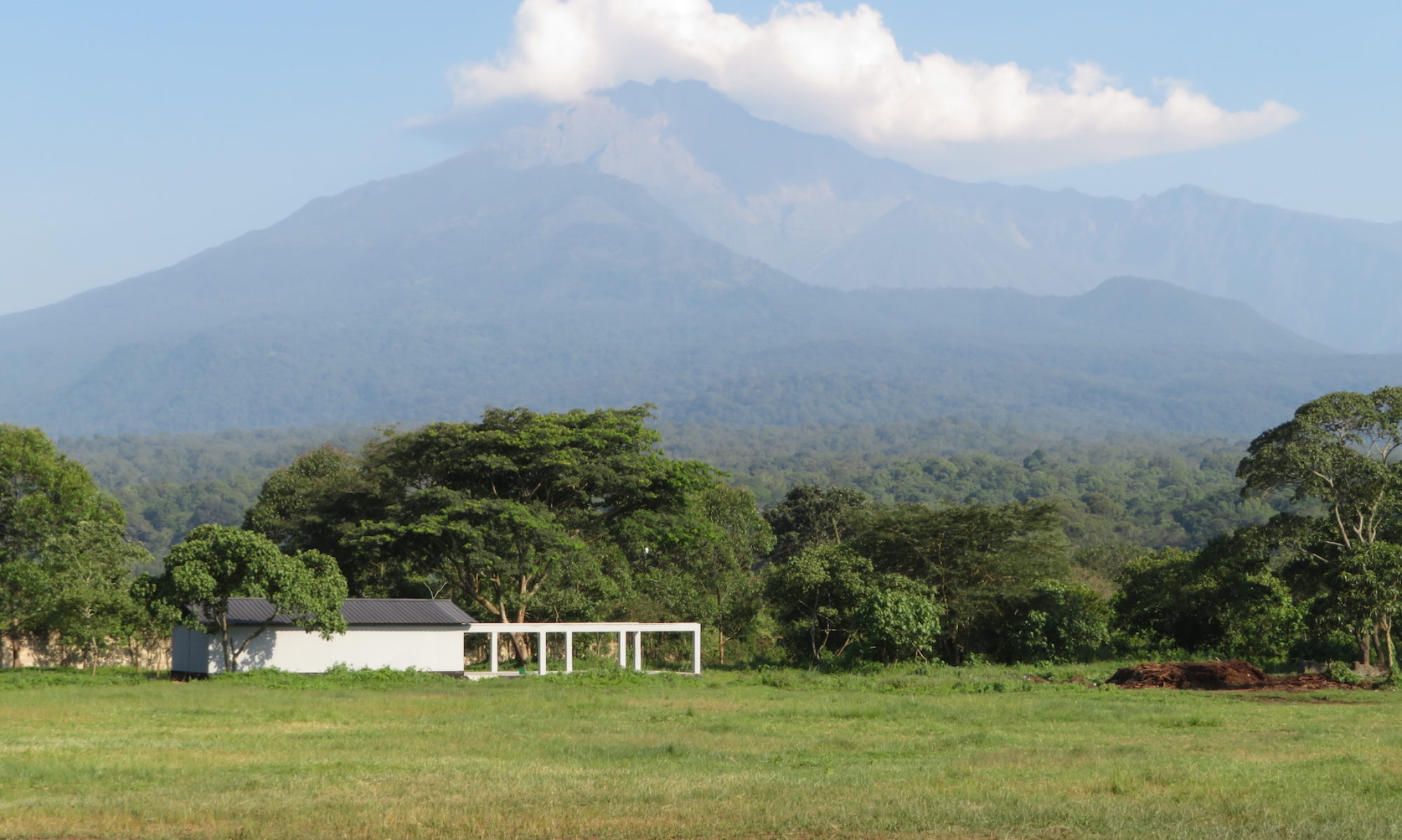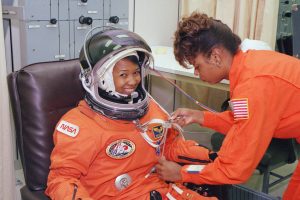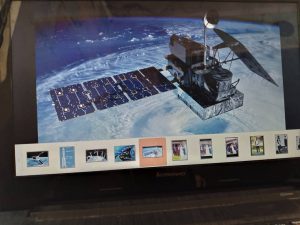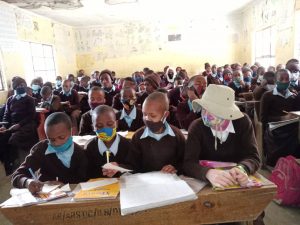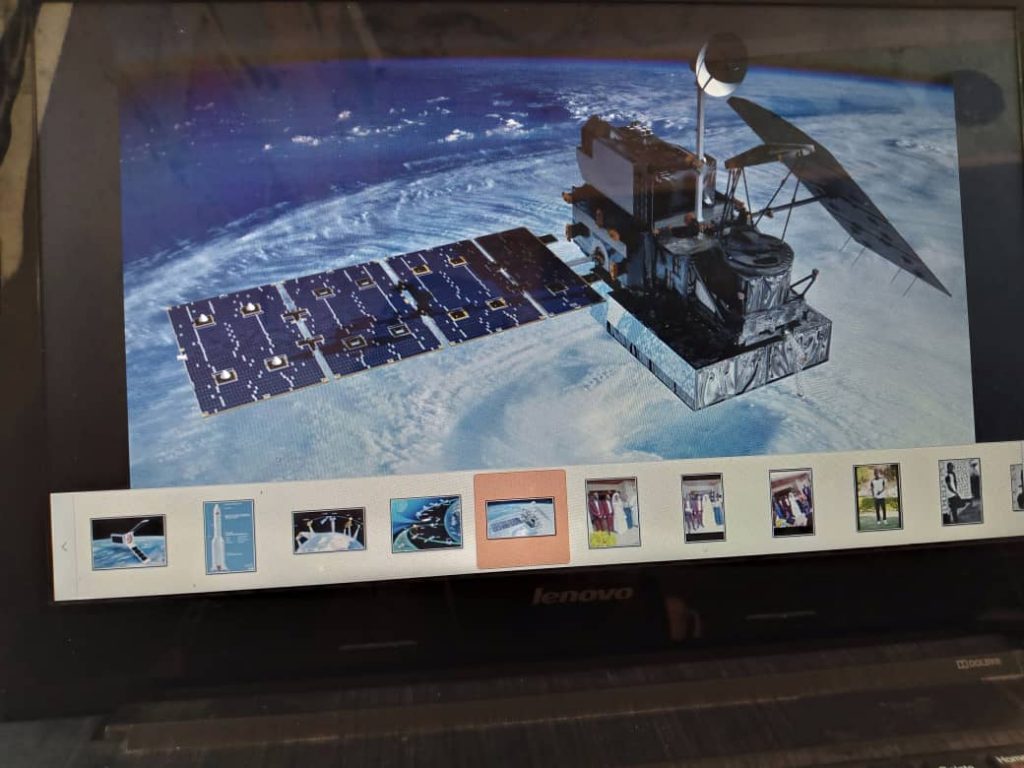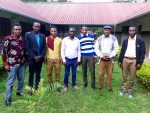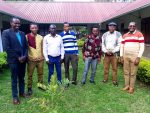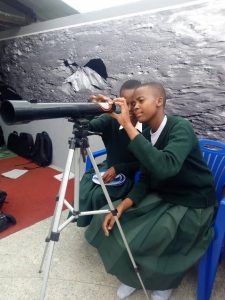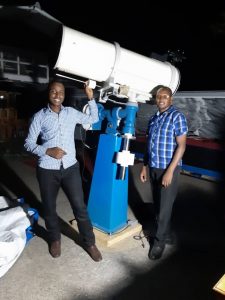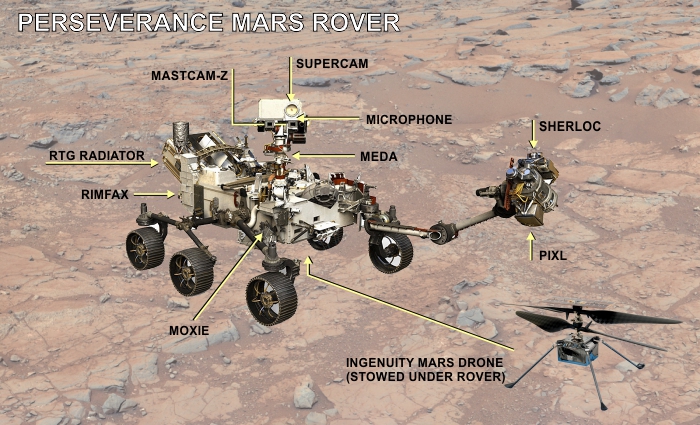Mwezi ni kitu tulichokizoea kukiona mara kwa mara nyakati za asubuhi, jioni na usiku. Lakini katika mila na tamaduni zetu za kiafrika na hata nje ya Afrika, kuna nadhalia nyingi na hadithi kuhusu Mwezi.
 Kupitia kipindi cha macho angani, wanafunzi wameweza kujifunza na kudadishi mambo mengi kuhusu Mwezi kwa kuzingatia sayansi. Hapa chini ni baadhi ya maswali waliyokuwa nayo wanafunzi, mara baada ya kufahamu zaidi kuhusu Mwezi na umuhimu wake kwetu.
Kupitia kipindi cha macho angani, wanafunzi wameweza kujifunza na kudadishi mambo mengi kuhusu Mwezi kwa kuzingatia sayansi. Hapa chini ni baadhi ya maswali waliyokuwa nayo wanafunzi, mara baada ya kufahamu zaidi kuhusu Mwezi na umuhimu wake kwetu.
Unaweza pia kujifunza kupitia kipindi hiko kwa kubofya chini hapa au kusikiliza majibu kwa kubofya hapa chini.
Emilian Joseph aliuliza: Kwanini kila baada ya siku 29 au 30 tunaweza kuona mwezi mpevu na sio siku pungufu zaidi?
Jibu: Mwezi unazunguka Dunia kwa kasi isiyobadilika. Wakati wa kuzunguka Dunia, tunaona uso wake jinsi unavyoangazwa na Jua. Kila wakati nusu ya Mwezi unaangazwa na Jua. Lakini nusu ile yote iliyoangazwa tunaona tu kwenye siku ya Mwezi mpevu. Ilhali mwezi unaendelea kuzunguka, tunaona baadaye tu sehemu ndogo zaidi iliyoangazwa, halafu nusu tu, halafu sehemu ndogo zaidi, halafu hilali tu na baadaye sehemu ya Mwezi tunayoona haina mwangaza kabisa. Baadaye sehemu iliyoangzwa iananza kuoenekana kidogo tena, kama hilali, na kadhalika. Badiliko hili lote limekamilika baada ya siku 29, saa 12, dakika 44 na sekunda pili. Tunaweza kusema muda wa kurudi kwa mwonekano wa Mwezi mpevu ni takribani siku 29 na nusu.
Unaweza kufanya jaribio usiku. Weka chungwa mezani pamoja na tochi. Lenga tochi kwenye chungwa. Zima taa kwenye chumba. Unaona nusu ya chungwa inaangazwa. Sasa zunguka meza na angalia jinsi unavyoona sehemu iliyoangazwa.
Unaonaje sehemu iliyoangazwa? Inafanana na awamu za Mwezi. Ila kiukweli si sisi kwenye Dunia tunaozunguka Mwezi bali Mwezi unatozunguka sisi. Ila matokeo ya muonekano wa upande iliyangazwa ni yaleyale.
Mariam aliuliza: Mwezi kama satelite ya asili umeundwa na nini?, na je safari kutoka duniani mpaka kwenye mwezi huchukua siku ngapi?
Jibu: Mwezi unaundwa na miamba. Sawa na Dunia ni mpira mkubwa wa miamba ila tu hakuna hewa hakuna bahari. Ukubwa wa Mwezi ni robo moja ya ukubwa wa Dunia. Safari ya kufika mwezini kutoka Dunia inadumu siku 3 hadi 4.
Belinda Adam aliuliza: Kwanini mwezi haitoi mwanga wake wenyewe ila unakisi mwanga kutoka kwenye jua je! Ina maana mwezi una madini gani yanayoweza kuakisi mwanga?
Jibu: Mwezi ni sawa na sayari: hazitoi Mwanga bali zinaakisi mwanga wa Jua. Ni nyota pekee ambazo zina joto kubwa kiasi cha kutoa mwanga, na Jua letu ni nyota iliyo karibu nasi.
Kuhusu kuakisi: Karibu kila kitu kinaakisi mwanga. Ukitazama mkono wako, unauona kwa sababu unaakisi mwanga.
Swali: Kwanini katika bara la Afrika linakuwa na jua la kutosha kuliko mabara mengine na pia inavyoonekana mwezi pia huangaza na kuonekana vizuri kuliko mabara mengine nini siri yake hapo inayotutofautisha na mabara hayo?
Jibu: Siyo bara la Afrika pekee linalopokea joto nyingi kutoka kwenye Jua. Maeneo ya joto kubwa yako pia katika bara la Amerika Kusini na Asia. Kuna kanda la Dunia linaloitwa Tropiki ambalo linapokea joto la Jua,. Ukanda huu unapatikana upande wa kusini na kazkazini mwa Ikweta. Tanzania ni sehemu ya kanda la tropiki. Hata ndani ya Afrika, ukifika mbali na ikweta joto linapungua, Mfano Afrika Kusini au Aljeria. Ambapo kuna miezi ya joto na pia miezi ya baridi.
Kuhusu mwonekano wa Mwezi hakuna tofauti kati ya mabara. Kote duniani, Mwezi unaonekana mkubwa ukiwa karibu na upeo wa macho. Kadri inavyofika juu angani, unaonekana mdogo.
Ester Ashaeli aliuliza: Kwanini mwezi una madoa doa au huonekana kuwa na makovu mengi au mabonde nini chanzo chake?
Jibu: Tunayoona kama madoa ni maeneo makubwa ambako mwamba ni mweusinweusi. Ni maeneo ambako miaka milioni nyingi iliyopita volkeno zilimwaga miamba iliyoyeyuka na kuonyesha rangi nyeusi baada ya kuganda.
Yale unayotaja kama makovu ni kasoko zilizobaki baada ya migongano ya miamba kutoka anga-nje. Kasoko ni shimo linalotokea kama kitu kikubwa kinagonga uso wa sayari au Mwezi. Shimo la kasoko linaviringishwa na duara ya miinuko, kama pete ya milima. Kasoko za aina hii ziko pia duniani lakini hapa zinaweza kupotea na kutoonekana baada ya muda mrefu kwa sababu mvua na upepo vinaleta mmomonyoko wa miinuko na kujaza shimo la katikati. Mwezini hakuna hewa wala mvua hivyo kasoko zinaonekana hata baada ya miaka bilioni.
Anitha Yohana aliuliza: Kwa nini mwezi unatoa nuru hafifu kwani kuna tofauti gani ya kimuundo ilitengeneza Jua na Mwezi?
Jibu: Mwezi unaonekana ukitoa nuru hafifi kwa sababu Mwezi hauna nuru; unaakisi tu nuru ya Jua.
Tutumia mfano wa taa wakati wa usiku. Ukiangalia globu au balbu inayowaka, inang’aa na kutoa mwanga mwingi; unaona pia meza, kiti, ukuta lakini hazing’ai sana maana zinaakisi mwanga wa balbu tu.
Kimuundo Mwezi wote ni mwamba. Lakini Jua ni mpira mkubwa sana ya gesi ya joto. Joto ni kubwa sana, kwenye uso wa Jua ni nyuzi elfu sita hivyo linatoa nuru.
Anderes Dismas aliuliza: Je kwanini hatuwezi kuona pande zote za mwezi kama upande wa nyuma ya mwezi je? Pande zote ziko sawa kimuundo au zina tofautitofauti?
Jibu: Tunaona upande moja wa Mwezi tu kwa sababu mzunguko wa Mwezi kwenye mhimili wake unatokea sambamba na obiti yake ya kuzunguka Dunia. Yaani katika kipindi cha kuzunguka Dunia mara moja, ambazo ni siku 29 na nusu, Mwezi unajizungusha mara moja kwenye mhimili wake. Hivyo ni upandeuleule unaaoendelea kutazama Dunia.
Kwa jumla hakuna tofauti kubwa kati y a pande hizo mbili; isipokuwa picha zinaonyesha kwamba maeneo ya miamaba meusi ni ndogo zaidi. Sababu yake haieleweki bado.
Glory Melau aliuliza: Mwezi na jua vina lingana? na je jua mwezi hupimwa kwa vifaa gani ili kupata umbali (urefu au upana)?
Jibu: Vipimo vya kimsingi vya umbali, urefu na upana vimepatikana tangu muda mrefu. Umbali wa Mwezi umeshapatikana tangu miaka 2200. Wakati ule mtaalamu katika Ugiriki ya Kale aliiytwa Hipparko. Aligundua umbali wa mwezi kwa kutumia mbinu unaoitwa paralaksi. Unaweza kufanya jaribio. Nyosha mkono mbele ya uso wako na inua kidole gumba. Sasa funga jicho moja halafu jicho lingine. Utaona jinsi kidole gumba linaonekana kusogea kushoto na kulia mbele ya mandharinyuma. Tofauti hiyo inaoitwa paralaksi.
Paralaksi ya Mwezi inaonekana ukitazama Mwezi kutoka miji miwili duniani. Utaona kwamba nyota zilizo karibu sana na Mwezi zinaonekana tofauti kila mahali, kwa sababu ya paralaksi. Sasa unawaza pembetatu, nukta zake ni miji miwili duniani, nukta ya tatu ni Mwezi.
Ukijua hisabati ya pembetatu, unahitaji urefu wa upande mmoja na viwango vya pembe ndani ya pembetatu. Ukijua hiyo, unaweza kukadiria urefu wa pande nyingine.
Sasa unatumia hisabati hiyo ya pembetatu; Nukta A na B ziko Duniani, nukta C ni Mwezi. Unajua umbali kati ya miji miwili A na B. Unaweza kupima pembe kati ya nyota ambazo ni karibu sana na Mwezi, na pembe hiyo ni pembe gamma ya pembetatu yako. Unajua jumla ya pembe ndani ya pembetatu ni nyuzi 180, hivyo unajua pia pembe za alfa na beta. Sasa unaweza kukadiria umbali wa pande mbili nyingine na hivyo unapata umbali hadi C ambayo ni Mwezi.
Siku hizi kuna vifaa vinavyopima umbali kwa kutumia mionzi ya rada au mwanga.
Hatima Athari aliuliza: Mwezi imewahi kufanyiwa kufikiwa mara ngapi kwa ajili ya kufanyiwa utafiti na je ni mataifa au taifa gani linaongoza katika utafiti huo?
Jibu: Utafiti wa Mwezi ulianza na vipimaanga kutoka Urusi mnamo 1959. Kipimaanga ni chombo kinachorushwa kwenye anga-nje kinachobeba kamera, vifaa vya kutekeleza vipimo mbalimbali na redio ya mawasiliano. Marekani ilifuata. Vipimaanga vilizunguka Mwezi na baada ya miaka kadhaa Warusi na Wamarekani walifaulu kufikisha vyombo kwenye uso wa Mwezi. Marekani pekee ilifaulu kupeleka watu hadi uso wa Mwezi, kwa jumla wanaanga 12 waliofika kwa safari sita. Tangu 1972 hakuna binadamu aliyetumwa tena Mwezini na utafiti uliofuata ulitekelezwa na mashine tu. Tangu miaka 25 kuna pia mataifa mengine yaliyotuma vipimaanga na hata magari ya utafiti hadi mwezini, hizo ni Japani, Umoja wa Ulaya, Uhindi na China.
